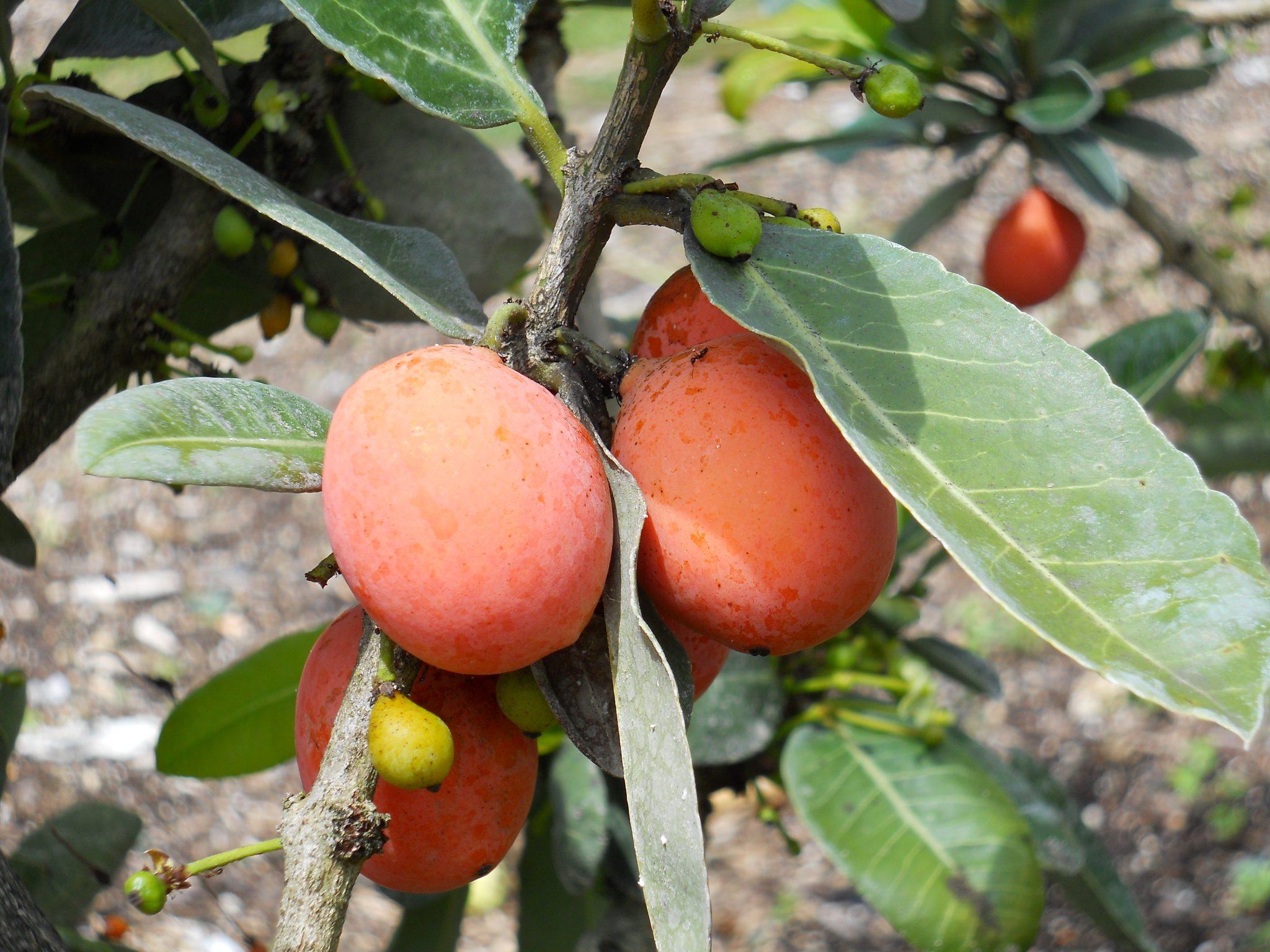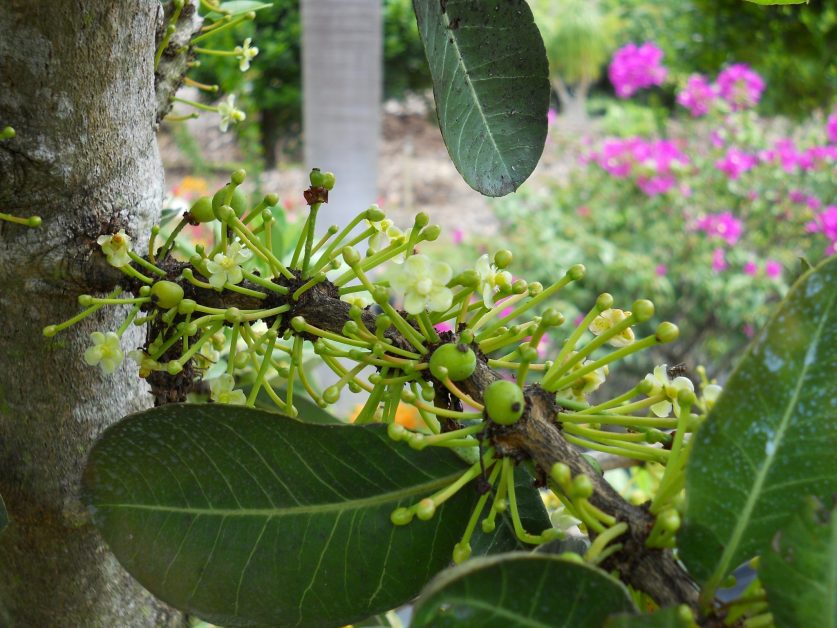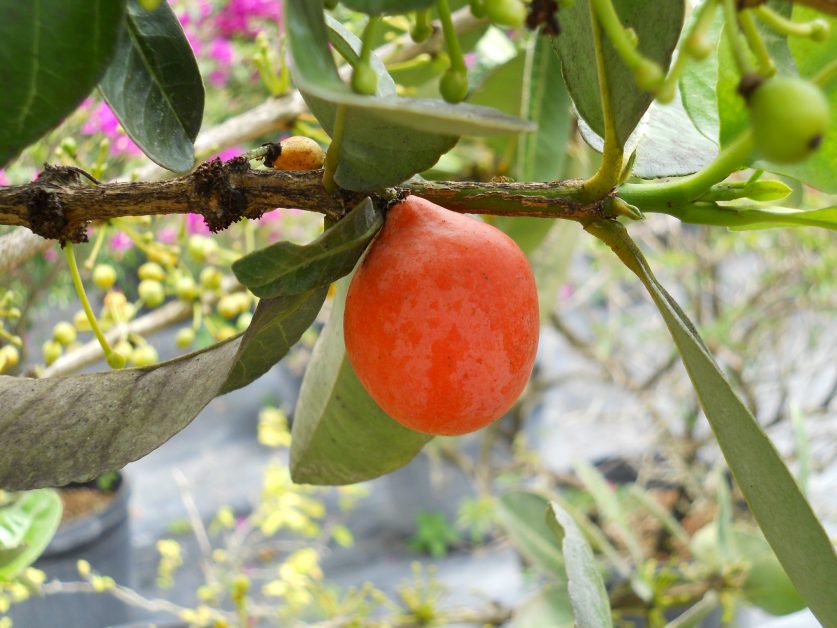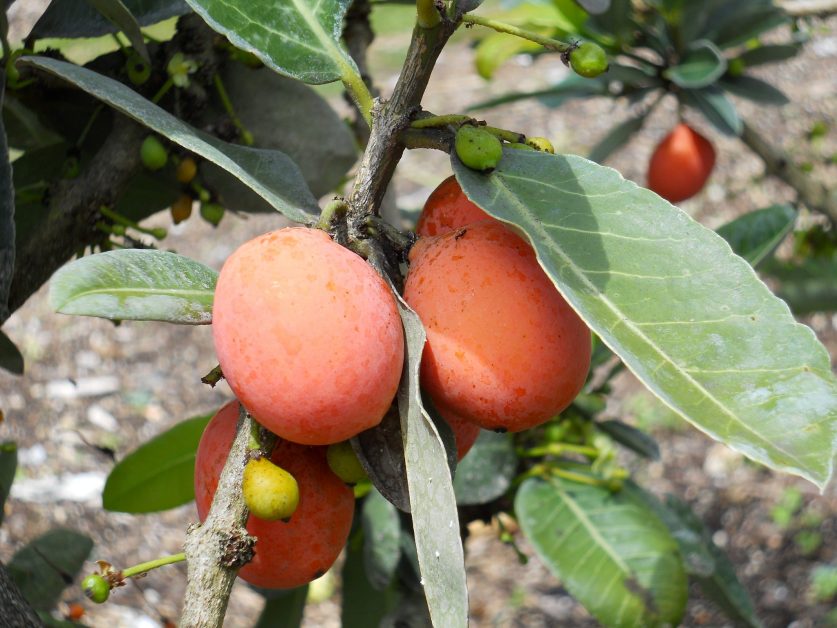Imbe: The Queen of Fruits?

A few years ago, a weekly newspaper in southern Africa published an article entitled “Imbe: The Queen of Fruits.” Given the wealth of delicious tropical fruit species, that’s a bold claim. The ownership and staff at Richard Lyons’ Nursery aren’t willing to go that far, but for several other reasons we are confident in recommending imbe (Garcinia livingstonei) for use in your yard.
What the African newspaper was really getting at was imbe’s potential as a food crop. It is a relative of the mangosteen (Garcinia mangostana), the source of a superb-tasting fruit, but ungrowable in southern Florida. Imbe, on the other hand, grows well here and produces a tasty, orange-pink skinned fruit. But because the seed takes up a lot of space in the fruit, it currently has little commercial value. Some day hybridization may resolve that problem; nevertheless, imbe in its current form makes a very good landscape plant.
Imbe is native to a variety of soil types in Africa, and consequently is very forgiving of Florida’s mediocre soils. It is also happy in a broad range of moisture conditions, although it will fruit more prolifically if irrigated regularly. G. livingstonei tolerates cold temperatures down at least into the high 20s. It grows very deliberately to a mature height of about 15-20 ft., and therefore will not outgrow most gardens. It develops an attractive assymetrical trunk. In fact, one commentator has likened its form to “a piece of angular modern sculpture….”
livingstonei— the species is named for THE Dr. Livingstone — produces fragrant flowers and attracts avian life. The fruit is quite nutritious, and there is some thought that it possesses anti-cancer properties. (One study has found that the plant’s leaves contain anti-bacterial compounds.)
The fruit is usually eaten fresh, but also makes a good jam or jelly, and can be incorporated into ice cream and milkshakes.
Imbe is ordinarily dioecious; that is, both male and female plants are necessary to produce fruit. However, in rare instances a single specimen contains both sexes, and such a plant is the source of the G. livingstonei plants available at Richard Lyons’ Nursery.
- Garcinia livingstonei (Imbe)
- Garcinia livingstonei (Imbe)
- Garcinia livingstonei (Imbe)


